new posts in all blogs
Viewing: Blog Posts Tagged with: 2004, Most Recent at Top [Help]
Results 1 - 25 of 29
How to use this Page
You are viewing the most recent posts tagged with the words: 2004 in the JacketFlap blog reader. What is a tag? Think of a tag as a keyword or category label. Tags can both help you find posts on JacketFlap.com as well as provide an easy way for you to "remember" and classify posts for later recall. Try adding a tag yourself by clicking "Add a tag" below a post's header. Scroll down through the list of Recent Posts in the left column and click on a post title that sounds interesting. You can view all posts from a specific blog by clicking the Blog name in the right column, or you can click a 'More Posts from this Blog' link in any individual post.
A Christmas Visitor. Anne Perry. 2004. 199 pages. [Source: Library]
First sentence: "There, Mr. Rathbone, sir, are yer right?" the old man asked solicitously.
Premise/plot: Henry Rathbone (Oliver's father) is visiting his goddaughter for the Christmas holidays. Her husband has literally just died. And Henry ends up being the one who meets each returning child (all adults) about the death. As the story gets told and retold, questions arise. Was Judah Dreghorn murdered? Who murdered him? Why? Can anyone prove it was murder and not an accident?
My thoughts: For such a short book, it was a surprisingly slow read. Its two hundred pages felt like four hundred. I think it would have been very helpful to break this one into chapters. The book is divided into "parts" and not chapters. One of the key reasons a book feels quick and enjoyable are short-to-medium length chapters. When you come to the end of the chapter, you flip the pages. And let's say the next chapter is four to ten pages in length, it's I HAVE TIME FOR ONE MORE CHAPTER. You can read just "one more chapter" for a good hundred pages or so. But when there are no natural stopping places for seventy-to-eighty pages, then you don't want to read it. You make excuses, I don't have the time now. Authors, pay attention, have chapters work to your benefit.
That being said, I adore the character Henry Rathbone. I got super-attached to him reading the William Monk series. And so I wanted to LOVE this one like crazy. I still think he's a good character. And the characters were more interesting than the ones in A Christmas Journey. There is no comparison between the books. This one is a lot better!!! But it just doesn't compare to her other novels.
© 2016 Becky Laney of
Becky's Book Reviews
.jpg?picon=107)
By:
Lizzy Burns,
on 12/23/2015
Blog:
A Chair, A Fireplace and A Tea Cozy
(
Login to Add to MyJacketFlap)
JacketFlap tags:
reviews,
adult,
historical fiction,
romance,
2004,
Mary Balogh,
Dell,
favorite books of 2015,
Add a tag
Slightly Sinful (Bedwyn Saga, # 5) by Mary Balogh. Bedwyn (6 Book Series)
by Mary Balogh. Bedwyn (6 Book Series) . Dell. 2004. Library copy.
. Dell. 2004. Library copy.
 The Plot: Lord Alleyne Bedwyn was left for dead after the Battle of Waterloo, injured. His head injury has taken his memories.
The Plot: Lord Alleyne Bedwyn was left for dead after the Battle of Waterloo, injured. His head injury has taken his memories.
Rachel York trusted the wrong people, and now she's broke -- but not alone. She's with the only four people in the world she truly trusts, so she is temporarily staying with them.
When Rachel finds Alleyne on the battlefield, he's been stripped of everything of value, even his clothes. She has no clue who he is, but she knows he lives so can be saved. She takes him back to where she is staying -- a brothel.
Broke, injured, no resources -- but themselves and each other.
The Good: I've been binge reading Mary Balogh books, so fast I barely have time to write down the name of the book I've read. No time for reviews!
Balogh has done some wonderful writing around the Peninsular Wars and the Battle of Waterloo, and the impact of those battles on the men and women who fought, and who stayed home. (Or what I sometimes think to myself as "the true story of what happened next to Wickham and Denny.") I particularly liked Web of Love for it's depiction of the lives of the women who "follow the drum" and the roles they have in the aftermath of battles.
for it's depiction of the lives of the women who "follow the drum" and the roles they have in the aftermath of battles.
Slightly Sinful sounds like it should be serious -- battles! war! destitution! But it wasn't. Yes, all that is there, but it's also so funny and a pure joy to read. While Alleyne is recovering physically, he falls for Rachel but he doesn't even know if he's married. Also, he thinks that because she lives in a house of prostitution she must be one herself. She loves and respects the women who have befriended her, so she doesn't want to insult them by denying that sisterhood. (And there are other books by Balogh where current or past prostitutes, courtesans, and paid mistresses are the main characters and supporting character.)
Here, Gerry, Bridget, Flossy and Phyl are working and saving to retire. Their current lives are presented matter of factly, and there present situation is treated with respect. Rachel has an inheritance she cannot collect for another three years, when she is 25; or when she marries.
Do you see where this is going?
The caper of deciding to fake Rachel's marriage to Alleyne was terrific. It was funny, yet at the same time it wasn't mean or silly. It was a madcap adventure and while this is the fifth / seventh book in the Bedwyn saga it definitely stands alone, maybe more so than the other books, because Alleyne's lack of memories of his family mean they have minimal presence.
The only disappointment I have is that there's only one book left in this series! And that I have to wait for my library copy to become available!
The good news is that Balogh is only new to me; she's been writing for ages so I have a long list of backtitles to keep working my way through. And one more thing: a big thank you to my local public library for having an ebook collection and including a large number of romance books in that collection. It's made my binge reading so easy!
And yes -- a Favorite Book Read in 2015.
Amazon Affiliate. If you click from here to Amazon and buy something, I receive a percentage of the purchase price.
© Elizabeth Burns of A Chair, A Fireplace & A Tea Cozy


The Tale of Hill Top Farm. Susan Wittig Albert. 2004. 286 pages. [Source: Bought]
Did I enjoy reading Susan Wittig Albert's The Tale of Hill Top Farm? Yes. It is one of the reasons I decided to host the
Edwardian Reading Challenge. (Not the only reason, mind you, but one reason.) What did I love about it? There were quite a few things that I actually really loved about it.
First, it's a cozy mystery.
Second, it's a cozy mystery set in England, at the turn of the century. It opens circa 1905.
Third, it stars Beatrix Potter, and, is very loosely based on her time in the country. (Not that I would ever mistake it for nonfiction. It is clearly fiction!)I like the rural village setting. I like the community focus. Plenty of quirky characters.
Fourth, it's a happy-cozy blend of human and animal narration. Readers meet animals of all sorts--big and small. Cats. Dogs. Sheep. Badgers. Guinea pigs. Mice. Rabbits.
The fifth reason? Do I really need a fifth reason to convince you to give it a try? Perhaps not, but I've got one anyway! I like multiple mysteries per book. Not every "mystery" is a murder mystery.
I would definitely recommend this book. I am looking forward to reading on in the series.
© 2015 Becky Laney of
Becky's Book Reviews
The Corset Diaries by Katie MacAlister. NAL. 2004. Library Copy.
by Katie MacAlister. NAL. 2004. Library Copy.
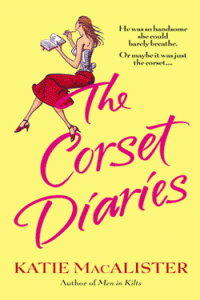 The Plot: Tessa gets a weird call from a good friend -- an opportunity to make a lot of money. Is your hair still long? Do you have a valid passport?
The Plot: Tessa gets a weird call from a good friend -- an opportunity to make a lot of money. Is your hair still long? Do you have a valid passport?
Thanks to an old friend, she has the chance to be in a historical reality TV show, A Month in the Life of a Victorian Duke. She'll play the American heiress wife.
What could possibly go wrong?
The Good: What could possibly go wrong?
Tessa is doubtful that she is really the ideal person to play the role of Duchess: she's 39, she's not skinny (do not tell anyone she is a size 18) and corsets, really? But the money would help give her chance to pay debts occurred from her late husband's medical bills. Plus, it may be kind of fun, right?
But who can have fun in a corset?
I laughed a lot at The Corset Diaries, at Tessa's trying to stay on-script while having a hard time with eighteenth century manners, servants, and, yes, clothes.
Plus, romance! Max is the man playing the Duke. He's five years younger than Tessa, which Tessa thinks is too big a difference ("when I was a ripe, womanly twenty, . . . he was a spotty, adolescent fifteen. . . . In dog years, our age difference is thirty-five years.") And she may have accidently thrown up on his shoes when they first met.
Bottom line: a funny, hot romance with an older man and younger woman? And a story where they actually give a size to her shape? (No, seriously, usually body may be talked about with words like "curves" and "voluptuous" but it's refreshing to have an actual number mentioned). Plus tons of historical clothes and manners, with a modern attitude?
Yes, please!
Amazon Affiliate. If you click from here to Amazon and buy something, I receive a percentage of the purchase price.
© Elizabeth Burns of A Chair, A Fireplace & A Tea Cozy


Devil at My Heels. Louis Zamperini and David Rensin. 1956/2004. Harper Perennial. 292 pages. [Source: Library]
I loved reading Unbroken. As soon as I found out that Louis Zamperini had written an autobiography, I NEEDED to read it. I hoped that it would be equally compelling and just as fascinating. It was. It really was. I honestly don't know if I could pick which one was "better." His story is worth reading no matter the book you choose.
Devil At My Heels is Zamperini's autobiography. In this book, readers learn about his growing up, his delinquent years, how his brother persuaded him to try running track, his early races and training days, how running 'saved' his life and put him on the right track, his 1936 Olympic experience, his college years, his joining the army air force, his war experiences, his surviving a horrible plane crash, how he survived almost fifty days at sea in a raft, his 'resue' from sea by the Japanese, his time in a Japanese POW camp, his return to the U.S, his popularity, his inner struggles, his marriage, his conversion experiences, his days as a speaker, how it was 'easy' for him to forgive the Japanese, how he tried to meet all his former prison guards, etc.
This one fascinates from cover to cover. I liked hearing the story in his own words. Both books are packed with detail, but, the focus isn't always in the same places.
© 2015 Becky Laney of
Becky's Book Reviews
The Cats in Krasinski Square. Karen Hesse. Illustrated by Wendy Watson. 2004. Scholastic. 32 pages. [Source: Library]
The cats come from the cracks in the Wall, the dark corners, the openings in the rubble. The Cats in Krasinski Square is an incredible read: a picture book written in verse about the Warsaw ghetto in World War II. Readers meet a young girl, a Jewish girl, who escaped the ghetto and is trying to survive by passing as Polish.
I look like any child
playing with cats
in the daylight
in Warsaw,
my Jewish armband
burned with the rags I wore
when I escaped the Ghetto.
I wear my Polish look,
I walk my Polish walk.
Polish words float from my lips
and I am almost safe,
almost invisible,
moving through Krasinski Square
past the dizzy girls riding the merry-go-round.
But she can't forget--won't forget the Jews still "living" in the ghetto. She wants to do her part to help them. She hears through an older sister, I believe, about a project to smuggle food into the ghetto. But the Nazi's have also heard something. It might take a miracle for the food to reach the Jews now...or it might take hundreds of CATS.
I loved the story, loved the storytelling. The illustrations are great.
© 2015 Becky Laney of
Becky's Book Reviews
The Greatest Skating Race: A World War II Story from the Netherlands. Louise Borden. 2004. Illustrated by Niki Daly. Simon & Schuster. 48 pages. [Source: Library]
I enjoyed reading Louise Borden's The Greatest Skating Race. Though the book has been out for ten years, I'd not come across it before. It is a wonderful picture book for older readers. I've only read a handful of picture books with a World War II setting. I'm on the look out for more. So if you know of some, please let me know in the comments! I'll try my best to review them.
Readers meet Piet, a young Dutch boy, in The Greatest Skating Race. He loves, loves, loves to skate. It would be odd if he didn't love to skate. He loves to dream about competing in the Elfstedentocht--a famous skating race, the "Eleven Towns Race." Readers learn details about the race throughout the text. But the race itself is not what this one is about. It is about the German occupation, and the ever-increasing threat to Jews.
One day, Piet's grandfather gives him a big, big task to accompany two Jewish children across the border and to their aunt's house.
Today you must be the best skater that you can be.
You must be as brave as your father...wherever he is.
You must be as brave as Pim Mulier!
You must skate the main canal to Brugge,
straight as an arrow to its mark.
And you will need to race against today's sun
to get there before dark.
I want you to skate as fast as you can,
but you must look like an unimportant schoolboy.
You will take Johanna and Joop Winkelman
and help them find their Aunt Ingrid's house.
We think this is the safest way to escape from those
who may wish these friends of ours harm. (16)
It will be a demanding journey--physically and mentally--and perhaps a dangerous one as well. There will be soldiers and checkpoints. And they'll have to find their way to the aunt's house--a place they've never been before. So they'll have to remember the directions carefully, and not let fear confuse them.
The book is good! I'd definitely recommend it.
© 2015 Becky Laney of
Becky's Book Reviews

By:
Becky Laney,
on 5/16/2014
Blog:
Becky's Book Reviews
(
Login to Add to MyJacketFlap)
JacketFlap tags:
books reviewed in 2014,
books reread in 2014,
E. Nesbit Reading Project,
family,
J Fiction,
J Fantasy,
2004,
children's classic,
MG Fiction,
MG Fantasy,
Add a tag
The Phoenix and the Carpet. E. Nesbit. 1904. 224 pages. [Source: Bought]
I've read The Phoenix and the Carpet three times now, and, I think I've decided I love it even more than Five Children and It. (It wasn't an easy decision. But. I think I'm ready to admit the truth.) (The first review was
June 2010; the second review was
August 2011.)
The Phoenix and the Carpet is the sequel to Five Children and It. Readers can continue to read about the adventures and misadventures of five delightful-but-not-always-obedient children: Cyril, Robert, Anthea, Jane, and Lamb. (I like how Anthea is nicknamed "Panther" and how Lamb is always referred to by his nickname, "Lamb" because Baa was his first word. It is little details that charm me best perhaps.)
More wishes. More magic. More mischief. It's everything I loved about the first book, and then some!
So how do they meet the Phoenix? How do they get a magic carpet? Well, it all starts when the children decide that it would be a very good idea, a very fun idea, to try out their fireworks--to make sure they work properly--INSIDE the house, inside the nursery to be precise. And when one of the fireworks seems to not be lighting, one of the children pours paraffin on it while another lights it again. While the results are not horribly tragic, the nursery must be repainted/repaired, and a new carpet is a must. The carpet that replaces the old is magical, of course. And inside this roll of carpet is an egg. But not an ordinary egg. Though of course, they don't know that until it accidentally falls into the fire in their nursery. And the Phoenix emerges....
I loved the adventures. I loved seeing them get in and out of trouble. And most of all I love the writing. I love E. Nesbit. I do!!!
Favorite quotes:
It has been said that all roads lead to Rome; this may be true, but at any rate, in early youth I am quite sure that many roads lead to BED, and stop there — or YOU do.
‘We’re very much luckier than any one else, as it is,’ said Jane. ‘Why, no one else ever found a Psammead. We ought to be grateful.’ ‘Why shouldn’t we GO ON being, though?’ Cyril asked—’lucky, I mean, not grateful. Why’s it all got to stop?’ ‘Perhaps something will happen,’ said Anthea, comfortably. ‘Do you know, sometimes I think we are the sort of people that things DO happen to.’
‘Well,’ said the Phoenix, seeming on the whole rather flattered, ‘to cut about seventy long stories short (though I had to listen to them all — but to be sure in the wilderness there is plenty of time), this prince and princess were so fond of each other that they did not want any one else, and the enchanter — don’t be alarmed, I won’t go into his history — had given them a magic carpet (you’ve heard of a magic carpet?), and they had just sat on it and told it to take them right away from every one — and it had brought them to the wilderness. And as they meant to stay there they had no further use for the carpet, so they gave it to me. That was indeed the chance of a lifetime!’
You can always keep the Lamb good and happy for quite a long time if you play the Noah’s Ark game with him. It is quite simple. He just sits on your lap and tells you what animal he is, and then you say the little poetry piece about whatever animal he chooses to be. Of course, some of the animals, like the zebra and the tiger, haven’t got any poetry, because they are so difficult to rhyme to. The Lamb knows quite well which are the poetry animals. ‘I’m a baby bear!’ said the Lamb, snugging down; and Anthea began: ‘I love my little baby bear, I love his nose and toes and hair; I like to hold him in my arm, And keep him VERY safe and warm.’ And when she said ‘very’, of course there was a real bear’s hug. Then came the eel, and the Lamb was tickled till he wriggled exactly like a real one: ‘I love my little baby eel, He is so squidglety to feel; He’ll be an eel when he is big — But now he’s just — a — tiny SNIG!’ Perhaps you didn’t know that a snig was a baby eel? It is, though, and the Lamb knew it. ‘Hedgehog now-!’ he said; and Anthea went on: ‘My baby hedgehog, how I like ye, Though your back’s so prickly-spiky; Your front is very soft, I’ve found, So I must love you front ways round!’ And then she loved him front ways round, while he squealed with pleasure. It is a very baby game, and, of course, the rhymes are only meant for very, very small people — not for people who are old enough to read books, so I won’t tell you any more of them.
‘If you wanted me you should have recited the ode of invocation; it’s seven thousand lines long, and written in very pure and beautiful Greek.’
‘He says,’ the Phoenix remarked after some time, ‘that they wish to engage your cook permanently.’ ‘Without a character?’ asked Anthea, who had heard her mother speak of such things. ‘They do not wish to engage her as cook, but as queen; and queens need not have characters.’ There was a breathless pause. ‘WELL,’ said Cyril, ‘of all the choices! But there’s no accounting for tastes.’
Mother was really a great dear. She was pretty and she was loving, and most frightfully good when you were ill, and always kind, and almost always just. That is, she was just when she understood things. But of course she did not always understand things. No one understands everything, and mothers are not angels, though a good many of them come pretty near it. The children knew that mother always WANTED to do what was best for them, even if she was not clever enough to know exactly what was the best.
Every one was a little cross — some days are like that, usually Mondays, by the way. And this was a Monday.
‘My hat!’ Cyril remarked. ‘I never thought about its being a PERSIAN carpet.’ Yet it was now plain that it was so, for the beautiful objects which it had brought back were cats — Persian cats, grey Persian cats, and there were, as I have said, 199 of them, and they were sitting on the carpet as close as they could get to each other. But the moment the children entered the room the cats rose and stretched, and spread and overflowed from the carpet to the floor, and in an instant the floor was a sea of moving, mewing pussishness, and the children with one accord climbed to the table, and gathered up their legs, and the people next door knocked on the wall — and, indeed, no wonder, for the mews were Persian and piercing. ‘This is pretty poor sport,’ said Cyril. ‘What’s the matter with the bounders?’ ‘I imagine that they are hungry,’ said the Phoenix. ‘If you were to feed them—’ ‘We haven’t anything to feed them with,’ said Anthea in despair, and she stroked the nearest Persian back. ‘Oh, pussies, do be quiet — we can’t hear ourselves think.’ She had to shout this entreaty, for the mews were growing deafening, ‘and it would take pounds’ and pounds’ worth of cat’s-meat.’ ‘Let’s ask the carpet to take them away,’ said Robert. But the girls said ‘No.’ ‘They are so soft and pussy,’ said Jane. ‘And valuable,’ said Anthea, hastily. ‘We can sell them for lots and lots of money.’ ‘Why not send the carpet to get food for them?’ suggested the Phoenix, and its golden voice came harsh and cracked with the effort it had to be make to be heard above the increasing fierceness of the Persian mews. So it was written that the carpet should bring food for 199 Persian cats, and the paper was pinned to the carpet as before. The carpet seemed to gather itself together, and the cats dropped off it, as raindrops do from your mackintosh when you shake it. And the carpet disappeared. Unless you have had one-hundred and ninety-nine well-grown Persian cats in one small room, all hungry, and all saying so in unmistakable mews, you can form but a poor idea of the noise that now deafened the children and the Phoenix. The cats did not seem to have been at all properly brought up. They seemed to have no idea of its being a mistake in manners to ask for meals in a strange house — let alone to howl for them — and they mewed, and they mewed, and they mewed, and they mewed, till the children poked their fingers into their ears and waited in silent agony, wondering why the whole of Camden Town did not come knocking at the door to ask what was the matter, and only hoping that the food for the cats would come before the neighbours did — and before all the secret of the carpet and the Phoenix had to be given away beyond recall to an indignant neighbourhood. The cats mewed and mewed and twisted their Persian forms in and out and unfolded their Persian tails, and the children and the Phoenix huddled together on the table.
The Lamb was very glad to have his brothers and sisters to play with him. He had not forgotten them a bit, and he made them play all the old exhausting games: ‘Whirling Worlds’, where you swing the baby round and round by his hands; and ‘Leg and Wing’, where you swing him from side to side by one ankle and one wrist. There was also climbing Vesuvius. In this game the baby walks up you, and when he is standing on your shoulders, you shout as loud as you can, which is the rumbling of the burning mountain, and then tumble him gently on to the floor, and roll him there, which is the destruction of Pompeii.
© 2014 Becky Laney of
Becky's Book Reviews

By:
Becky Laney,
on 5/2/2014
Blog:
Becky's Book Reviews
(
Login to Add to MyJacketFlap)
JacketFlap tags:
Richard Peck,
2004,
MG Fiction,
library book,
mg historical,
j historical,
books reviewed in 2014,
books reread in 2014,
humor,
J Fiction,
Add a tag
The Teacher's Funeral. Richard Peck. 2004. Penguin. 208 pages. [Source: Library]
If your teacher has to die, August isn't a bad time of year for it. You know August. The corn is earring. The tomatoes are ripening on the vine. The clover's in full bloom. There's a little less evening now, and that's a warning. You want to live every day twice over because you'll be back in the jailhouse of school before the end of the month. Then our teacher, Miss Myrt Arbuckle, hauled off and died. It was like a miracle, though she must have been forty. You should have seen my kid brother's face. It looked like Lloyd was hearing the music of the spheres. Being ten that summer, he was even more willing to believe in miracles than I was.
The Teacher's Funeral is my favorite, favorite, favorite Richard Peck novel. It is one of my favorite historical fiction books. I loved the humor. I loved the writing--the narration. One humorous incident after another, just more and more to love. I also loved the characters. I loved Russell, the narrator. I loved his sister, Tansy. I loved their Dad who was oh-so-wise. I loved Charlie, Russell's best friend, and it was fun to see Glenn Tarbox as well. I was cheering for him through the book! But one of my FAVORITE, FAVORITE characters, and probably secretly the reason I ADORE the book so very, very much is LITTLE BRITCHES (aka Beulah).
This historical fiction novel is set in 1904. Most of the action occurs in a one room school house. The teacher is Russell's OLDER sister. Russell had been hoping--dreaming really--that since their teacher literally died a day or two before school was to start, that there would be NO MORE SCHOOL. He was dreaming of FREEDOM. What he got, of course, is his sister for a teacher. A sister who could see through him, who knew him backwards and forwards, and could tell when he was TROUBLE. He can do pranks, sure enough, but she always knows it was HIM and she punishes him.
This one has plenty of laugh-out-loud moments. And there is a lovely audio book edition of it as well. My first review October 2006. My second review March 2011.
Favorite quotes:This was the night me and Lloyd always went to the crick and camped out. It was a sacred part of our year. After the Case Special came through, we always spent that night at the crick, and hung on till morning, no matter what. It was how we kissed the summer goodbye before the darkness of learning fell about us. (13)
"Who died?" I inquired.
"Take a guess," Charlie said. "Go ahead."
"Somebody we know?"
"You can believe that."
"Somebody old or young?"
"Old," Charlie said, "as the hills."
Lloyd was looking back and forth between us, clutching J.W. He was on the hook again, and I was getting there.
"Old as Old Man Lichtenberger?"
"Nobody's that old," Charlie said.
"Man or woman?"
"That'd be tellin' too much."
"Somebody we like?"
"Not hardly," Charlie said.
"Somebody who's been feeling poorly late?" I was wracking my brains.
Charlie shrugged his big shoulders. "She must of felt pretty poorly tonight. She died."
"So it's a woman!"
"More or less," Charlie said.
The truth burst over me. "You don't mean Miss Myrt Arbuckle!" (24)
Nobody would miss Miss Myrt, so Preacher Parr got them to miss the good old days when the winters were worse and the kids were better. At a funeral you want to miss something. (39)
When Pearl came back, she had a grip on the little kid who didn't want to be anywhere near here. Her bonnet hung by its strings. Her dinner pail scraped the floor. She kept setting her bare heels. "Turn me loose," she squawked. "I don't wanna, and I'm not gonna!"
Pearl pushed her toward Tansy and resumed her seat.
Tansy pulled the small girl's skirttails free of her drawers and settled her skirts for her. But it was too late. Forever more, she was known as "Little Britches." Even unto the distant day of her wedding. Besides, come to find out her real name was Beulah.
"Who are you?" Tansy asked with an arm around her.
"I ain't sayin'," said Little Britches. "I ain't stayin'."
"Then whisper who you are in my ear before you go."
Little Britches whispered. It would turn out that she was a Bradley. They were a family who hadn't had anybody in school for some years. Little Britches was an afterthought. "I'm goin' on home now." She wiggled free of Tansy. "Pleased to meetcha."
"Well, you can go home at noon, Tansy told her. "Till then just wait up there at my desk. You can...help me be teacher." (80-1)
"Tansy, how come the female sex think they know more than the male sex?"
"Because we do. What's the capital of Delaware?"
"I don't know."
"Know by tomorrow," Tansy warned. "I'm the teacher, and I won't have dumb brothers." (107)
I thought we'd need a block and tackle to lift her. But getting Aunt Fanny Hamline out of the ditch became one of Tansy's most famous days of teaching. It was a lesson in engineering too. It should have been studied at Purdue University. (127)
© 2014 Becky Laney of
Becky's Book Reviews
Meet Me in St. Louis: A Trip to the 1904 World's Fair. Robert Jackson. 2004. HarperCollins. 144 pages. [Source: Bought]
Meet Me in St. Louis is a fascinating book about the 1904 World's Fair. I found this nonfiction book for young readers to be entertaining and wonderful from cover to cover. It was well-organized. The narration was great--never a dull moment. It was detailed. If you love discovering "I didn't know that?!" facts, this is one to treasure. I found myself wanting to find people to enlighten. I learned so much from reading it.
Chapter one is a direct appeal to readers. Jackson writes in second person. He wants YOU to join him at the fair. This chapter gives a brief overview of the fair, inviting you to "experience" it through your five senses.
"The giant wheel lurches into motion; you hold your breath and feel yourself moving. How is it possible for such a large car, stuffed to the gills with sixty people, to rise into the air like this? You bravely take a first peek out the windows. Off to the near right, you spot the Abraham Lincoln Exhibit, which houses the actual log cabin where Lincoln lived as a child in Kentucky. Then the rolling gardens and peaceful ponds of the Japanese Pavilion opens up in front of you. A bit higher and you can see all of the Jerusalem Exhibit, a miniature version of that Middle Eastern city filled with replicas of ancient buildings. Can this be St. Louis, or have you been transported to a whole new world?" (10)
Chapter two chronicles the preparation and construction.
Chapter three tells of opening day.
Chapters four and five tells of buildings and exhibits. It tells about each of the palaces at the World's Fair. There was, for example, the palace of mines and metallurgy, palace of varied industries, palace of education and social economy, palace of fine arts, palace of liberal arts, palace of manufactures, palace of transportation, palace of electricity and machinery, palace of agriculture, palace of horticulture, palace of forestry, fish, and game. One of my favorite places to read about was the Model Playground.
Chapter six is a great for capturing the unique entertainments. It focuses on "the Illusions on the Pike." Jackson writes,
"Plays, concerts, circus tricks--more than forty different shows were staged in all, some in theaters and others right in the center of the wide walkway. Fifteen hundred animals, from zebras to polar bears, lived on the Pike during the fair, and many of them were entertaining performers too. Without a doubt, the Pike was the loudest area on the fairgrounds. Dozens of men called "spielers" or "barkers" shouted into megaphones for hours, trying to attract people to rides and shows." (73) This chapter also mentions Geronimo. "He signed autographs for ten cents each; depending on his mood, the price for his photograph ranged between fifty cents and two dollars. Geronimo would even sell his hat for the wildly expensive price of five dollars--then coolly pull a new one from under the table, place it on his head, and wait for another buyer." (83)
Chapter seven focuses on the debut of the Ferris Wheel, or "Observation Wheel."
Chapter eight is titled, "Faces of the Fair." I thought this was a well done chapter that examines, with honesty, the diversity of the Fair; in many places, it addresses racism and exploitation. The fair, as we've read so far, may have been educational, and it may have been FUN, but, it wasn't always fair and just.
"While blacks were not the only minority group treated with disrespect, at least they were free to boycott the fair if they wanted. Others were not able to protest. Several ethnic groups had been brought from their homelands to St. Louis--in some cases by force. Men, women, and children were put on display so that fairgoers could take a first-hand look at them and, in theory, learn about their cultures. The largest of these "anthropological" exhibits came from the Philippines. Hundreds of exploited Filipinos lived on the fairgrounds in open huts and flimsy thatched cabins. Cramped and filthy, the housing offered almost no privacy. The Filipinos were forced by fair managers to sit quietly while crowds of curious visitors gawked at them; they were also told to sing, dance, and perform other activities against their will. Instead of learning about the Filipinos and gaining respect for this culture, most fairgoers concluded they were a primitive race of inferior beings." (100)
And later from the same chapter,
"Some people were disturbed by the exploitation of ethnic groups, including a magazine reporter named Laura Ingalls Wilder. Long before the Little House on the Prairie books made her a well-known children's author, she traveled from her home in southern Missouri to write about the fair. Wilder enjoyed the palaces, foreign buildings, and the Pike, but she was appalled by the mistreatment of many of the foreign and Native American people. She reportedly even tried to stop exhibitors from forcing them on display. One day, a young man from Africa was being exploited during a typically cruel stage show. Wilder stood up in the middle of the audience and demanded that the show stop immediately." (103-4)
Chapter nine is about "special events." The chapter covers many such events. But the BEST, BEST, BEST part of this chapter is devoted to the 1904 Olympic Games in St. Louis!!! There were a dozen little things that I found fascinating in this section. At least a dozen!
"Because the Games were fairly new--and therefore disorganized--many bizarre and amusing things happened. After a disagreement over who won the fifty-meter race, two swimmers got into a brawl and just agreed to race again. There was no such thing as instant replay in 1904, of course. And American gymnast George Eyser ambled off with five medals, including two golds, after competing with a wooden leg. He had lost one leg after being run over by a train years earlier." (114)
And
"A pair of Zulu tribesmen, Len Taunyane and Jan Mashiani, became the first African athletes to compete in the Olympics, even though they were supposed to be part of the Boer War Exhibit. Taunyane might have won, but a fierce dog chased him nearly a mile off course, and he finished in ninth place." (116)
Chapter ten focuses on the last days of the fair.
I would definitely recommend this one!!
© 2014 Becky Laney of
Becky's Book Reviews
This is The Baby. Candace Fleming. Illustrated by Maggie Smith. 2004. FSG. 40 pages. [Source: Book I Own]This is the baby who hates to be dressed."No! No! Nooo!"This is the diaper, often a mess, that goes on the baby who hates to be dressed."No! No! Nooo!"This is the T-shirt, wrinkled a lot, that snaps over the diaper, often a mess, that goes on the baby who hates to be dressed."No! No! Nooo!"This is the sweater, itchy and hot, that covers the T-shirt, wrinkled a lot, that snaps over the diaper, often a mess, that goes on the baby who hates to be dressed."No! No! Nooo!"These are the jeans, stiff in the knee....I love this one. I do. I like
true picture books. Stories that reflect every day situations and struggles, stories that look at life realistically. The book is also fun and playful. I also like picture books that are repetitive or that have refrains, making it easy for little ones to join in during the reading.
In
This is the Baby, readers meet one stubborn mother and one just-as-stubborn baby. Who will win the battle?!
This one has a good twist on it, a bit predictable perhaps, but still fun! I would definitely recommend this one to parents who have little ones who like to wiggle and giggle free and undressed...
Text: 5 out of 5
Illustrations: 4 out of 5
Total: 9 out of 10
Dig! Andrea Zimmerman and David Clemesha. Illustrated by Marc Rosenthal. 2004. Harcourt. 32 pages. [Source: Book I Own]Mr. Rally drives a big yellow backhoe. It has a scooper and a pusher. Mr. Rally loves to dig in the dirt. So does his dog, Lightning. Mr. Rally buckles his overalls and pulls on his boots. He has five big digging jobs to do today. He counts them. One. Two. Three. Four. Five. Job #1 up ahead. One is a bridge on the ridge. Dig is a fun picture book that I really enjoy. Readers meet Mr. Rally and his dog, Lightning.
Readers see the two get excited about digging in the dirt. This one has a repeating refrain: "Dig up rock and dig up clay! Dig up dirt and dig all day!" This refrain is repeated at all five jobs, as is the congratulating refrain of "Good job, Mr. Rally! Good job, Lighting!"
After a long day of work, you might think Mr. Rally would want to go home and relax. And he does, in his own way, I suppose. But at the end of his day, Mr. Rally can still be found digging alongside Lightning. He loves to dig for work and play, of course. He loves to dig at home in his garden.
Text: 4 out of 5
Illustrations: 4 out of 5
Total: 8 out of 10
© 2014 Becky Laney of
Becky's Book Reviews
The Bar Code Tattoo. Suzanne Weyn. 2004/2012. Scholastic. 256 pages.
The Bar Code Tattoo is a quick read that I ultimately found disappointing. Kayla is weeks away from turning seventeen, in just a few weeks she'll have to choose whether she wants to conform or rebel against society and the government. The tattoo is relatively new--at least to the United States, having been tested first in Europe and Asia. And the tattoo is changing lives, for better or worse. For some who receive it, their lives improve dramatically: new opportunities at work, pay increases, etc. For others, it ruins them almost completely. Some lose their jobs, their homes, their credit or money no longer being "good" enough to be accepted anywhere. Not that any of this is being publicized, not really. Those who speak out against the tattoo are in the minority--or so it seems. And while there are rebel groups out there, well, they don't have the power to change things. At least not yet. Kayla's mind is made up almost from the time of her father's death. She blames--and her mother blames--his suicide to the tattoo. He has NOT been the same since receiving it, the changes coming slowly but surely over a month or two. Kayla joins a group she learns about at school, and so her rebellion begins. It may not seem like much of a commitment at first, but Kayla will ultimately have to make some tough choices.
It is a quick read, very fast-paced, very plot-driven. It started off promising enough, but by the end I was disappointed. The last few chapters were odd. Read The Bar Code Tattoo
- If you're looking for a light, quick read
- If you're looking for a futuristic (2025 or so?) read featuring conspiring evil governments, societies, scientists, corporations, etc.
© 2012 Becky Laney of
Becky's Book Reviews
Messenger. Lois Lowry. 2004/2012. Houghton Mifflin Harcourt. 169 pages.
In anticipation of reading Son, I decided to reread the Giver trilogy. Messenger is the third book, and it is a companion to The Giver and Gathering Blue. The hero of Messenger is Matt, a character first introduced in Gathering Blue. Several years have passed between the two books, and Matt is living with Kira's (blind) father. At one time, both found their village completely ideal. It was a community that celebrated morality: kindness, mercy, tolerance. It was a community that celebrated second chances. Open hearts, open borders, education for all. But times are changing slowly but surely and some are beginning to notice the differences. The Forest is also changing...
At one time Matt felt comfortable entering the Forest. He traveled from community to community. Not everyone COULD enter the Forest, not everyone wanted to enter the Forest. The Forest had a way of letting a person know if he/she were welcome. For those not welcome, it would seem to maliciously attack you.
Matt has ONE HUGE MESSAGE to deliver when the Forest begins to become unfriendly...will he leave the forest alive?
This one stars Matt and Kira (and Kira's father), but also mentions THE LEADER and a certain sled.
This one is definitely a darker novel, and a more symbolic novel.Read The Messenger- If you enjoyed The Giver and Gathering Blue and want to continue on in the series
- If you are a fan of Lois Lowry
- If you enjoy mysteries and dystopias
© 2012 Becky Laney of
Becky's Book Reviews
The Schwa Was Here. Neal Shusterman. 2004. 240 pages.
I am definitely glad I chose to reread Neal Shusterman's The Schwa Was Here. I'm not exactly sure I loved it as much this second time, but, I am glad I reread it.
My reaction the first time I read this one--back in 2005--was that THIS WAS THE BEST, BEST, BEST book ever...at least of 2004. I was wowed by the characters of Schwa and Antsy. And smirked at the developing relationship between Old Man Crawley and Antsy. I thought it had heart and humor and a great narrative voice. And I still do, for the most part. I definitely think that Antsy is a GREAT narrator. The narrative voice in this one is so strong. Antsy can be very very funny in his observations--particularly in his observations about life, like how he compares life to a bad haircut, or change in life to a bad haircut. But he can also be authentic in some very tense, uncomfortable situations. In particular the tension-filled dynamics of his family. Never do readers get the idea that Antsy's life is one big joke after another. Readers see a blending of humor and pain. Which I think is authentic.
So the premise of this one is simple, Calvin Schwa is a middle schooler who, for the most part, remains invisible to teachers and students alike. They just don't see him. It's like he's not even there. Antsy does notice him, though even Antsy sometimes slips, and begins to make the Schwa a project of his. He decides to experiment to see the properties of the Schwa effect. The first few experiments are funny. Over-the-top ridiculous. But the experiments don't last forever, and the joke doesn't stay funny for long. Schwa may have enjoyed a couple of weeks of particular attention (not being taken seriously, mind you, not being seen for who he is, really is, but being the focus of a joke, a bet, a fad), but soon Antsy is his only friend. Almost. (A girl does enter into this.) How long can the Schwa go on being unseen and unheard? When will enough be enough? Can he turn his tragic non-life around?
I suppose the only thing that has changed in my rereading is that it doesn't strike me as truly being the best, best, best, best, best book ever. I still love it, I still really love it. I still seeing it as being a strong novel with a lot of heart and soul to it--a blending of emotions that make up life as we know it. I still love Antsy. I still love seeing a novel that addresses the invisibility of some kids. I still love seeing all the family drama.
Read The Schwa Was Here
- If you love Middle Grade Fiction
- If you love coming-of-age stories
- If you love stories with great narrators
- If you have room in your heart for a grumpy old man
© 2012 Becky Laney of
Becky's Book Reviews
The Great Influenza. The Story of the Deadliest Pandemic in History. John M. Barry. 2004. Penguin. 546 pages.
From the prologue:
The Great War had brought Paul Lewis into the navy in 1918 as a lieutenant commander, but he never seemed quite at ease when in his uniform. It never seemed to fit quite right, or to sit quite right, and he was often flustered and failed to respond properly when sailors saluted him. Yet he was every bit a warrior, and he hunted death. When he found it, he confronted it, challenged it, tried to pin it in place like a lepidopterist pinning down a butterfly, so he could then dissect it piece by piece, analyze it, and find a way to confound it. He did so often enough that the risks he took became routine. Still, death had never appeared to him as it did now, in mid-September 1918. Row after row of men confronted him in the hospital ward, many of them bloody and dying in some new and awful way. He had been called here to solve a mystery that dumbfounded the clinicians. For Lewis was a scientist. Although a physician he had never practiced on a patient. Instead, a member of the very first generation of American medical scientists, he had spent his life in the laboratory.While I'm not sure every reader will find The Great Influenza equally compelling, I must say that this one was quite the read for me! It was fascinating, challenging, and complex--complex in a
good way. The Great Influenza is more than the story of the 1918/1919 influenza pandemic that spread around the world. It covers the background of medicine, how medicine is practiced, how doctors are trained and educated, how schools and laboratories are run, the need for excellence not just competence. (Though competence is a good place to start when there are no standards at all for who can practice medicine and call themselves a doctor.) It covers science, medicine, sociology, and even politics. Yes, The Great Influenza covers almost everything you could want to know. It follows the story of a handful of scientists in particular--exploring their personal and professional lives, presenting their theories and experiments, documenting their successes and failures. Most of this one, of course, does focus on the pandemic--tracing it throughout the spring of 1918 through most of 1919. It even follows up on how it continued to impact lives--months and even years later. How having this particular strain of influenza effected your brain and how it could continue to give you problems.
I really enjoyed this one! I found it completely fascinating. I loved all the details.
Read The Great Influenza
- If you are interested in World War I
- If you are interested in science, history, sociology, politics, and medicine
- If you are looking for compelling nonfiction; yes, this one may take almost a hundred pages to get to the influenza of 1918, but it's worth it.
© 2012 Becky Laney of
Becky's Book Reviews
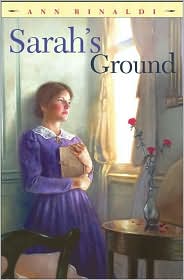 Sarah's Ground. Ann Rinaldi. 2004. Simon & Schuster. 192 pages.
Sarah's Ground. Ann Rinaldi. 2004. Simon & Schuster. 192 pages.
My older sister, Fanny, put me in a closet once when we were children. She, being the elder, had her reasons, I suppose.
Sarah's Ground opens in the spring of 1861. Our heroine, Sarah Tracy, is a young woman with a unique opportunity. Having lied on her application, she's been hired by a preservation association (or society?) to oversee Mount Vernon, George Washington's home. The estate isn't in the best condition, and, it needs some attention, some care, to restore and preserve the legacy of this historic home. Sarah Tracy is the woman for the job. And this novel focuses on the first year of the War Between the States as she fights for Mount Vernon to remain neutral--to remain safe from both armies.
I thought the story was interesting. While I didn't love this one, I was never bored by it. I may not think it the best book ever written about the Civil War, but I did think it worth the read. I learned a few things I didn't know, for example. And so I would recommend it to fans of historical fiction, of the civil war era in particular. As historical fiction, I think it works, as a romance, not so much. So it depends what you're looking for in a book.
© 2011 Becky Laney of Becky's Book Reviews

By:
Becky Laney,
on 4/26/2011
Blog:
Becky's Book Reviews
(
Login to Add to MyJacketFlap)
JacketFlap tags:
dystopia,
2004,
2006,
YA Mystery,
YA Fiction,
Survival,
library book,
Simon and Schuster,
YA Science Fiction,
YA Thriller,
YA Action,
cloning,
Add a tag
Sharp North. Patrick Cave. 2004/2006. Simon & Schuster. 528 pages.
The girl nearly didn't find out who she was. What she was. Sharp North is a perplexing YA novel. Part mystery. Part thriller. Part dystopian. It's set in a future world forever altered by global warming. A future world with a corrupt government. (How many fictional future worlds don't have a corrupt government?) A future world threatened by an underground movement, a revolution in the making. Our heroine, Mira, has a role to play in this world--for better or worse. And it's a role that mystifies Mira. For Mira's future is just as uncertain as her past.
Sharp North begins with a murder. Mira witnesses this murder, this hushed up murder, and it forever changes the way she sees the world, the way she sees her community. In part because she finds out that she is connected to the victim. She finds a piece of paper, a mere scrap, with a list of names. Her name is on the list. And so is the name of one of her friends, Gil Moore. He's listed as "her watcher." But why is he watching her? Is he her friend or her enemy? Is he out to see that she survives? Or is he in place to eliminate her? That's what Mira can't forget, can't erase. Are the people who murdered this mysterious woman, this mysterious stranger, out to get her? What led to this crime? For even if the whole world chooses to ignore it, Mira can't. Was it the woman's curiosity? Well, Mira can't help being curious now!
So Mira sets out on a journey to discover the truth, the truth about who she is, what she is. In a way she's running away from danger just as much as she's running straight into it. For Mira hasn't a real clue who her enemies are and who her friends may be. Is there a safe place for Mira? Or is she destined to upset the balance of those around her?
We meet a few interesting characters in Patrick Cave's Sharp North. Including several members of the Saint family, one of the "Great Families" that govern in this new world.
Maybe other readers can piece together this mystery. Maybe other readers can read it without being confused by the ending--as for me, well, I'm puzzled by how it ended. I still don't know what really happened.
So did I like it? Yes and no. I liked the idea of it. But. It felt like two or three stories pieced together. And it didn't always work for me.
© 2011 Becky Laney of
Becky's Book Reviews
Inside Grandad. Peter Dickinson. 2004. Random House. 128 pages.
Gavin and Grandad were fishing for mackerel from the harbor wall when the seal popped its head out of the water. Gavin loved his Grandad very much. Grandad is the one who takes care of him; Gran works; his mom works; his dad is gone most of the time. The two are very close. They enjoy doing many things together. They like to fish. They like to build model boats. One day the two are busy at work on a model boat, a boat that Gavin has just decided to name Selkie, when his Grandad has a stroke. The doctors say that Grandad has had a stroke. No one knows how much of a recovery he'll make. It's too soon to say. He's still in a coma.
The novel focuses on how this effects Gavin. He's scared. He's worried. He's anxious. He wants to be at the hospital by his Grandad's side, holding his hand; and yet, he doesn't. He wants to be the one to reach him. He wants to be the one to talk to him, to read to him, to hold his hand, to be there for him. Yet, it seems too much to handle.
At some point, Gavin becomes convinced that selkies may hold the answer. His grandad always said they could help you when you were in need. And that's where this novel becomes a little weird, a little magical.
I didn't care for the selkie twist in this one. Not really. I mean I think some readers will enjoy that aspect of it. But I could have done without it.
So do I like this one? Yes, for the most part. I didn't love it. But I don't need to love everything I read.
© 2011 Becky Laney of
Becky's Book Reviews
The Teacher's Funeral. Richard Peck. 2004. Penguin. 208 pages.
If your teacher has to die, August isn't a bad time of year for it. You know August. The corn is earring. The tomatoes are ripening on the vine. The clover's in full bloom. There's a little less evening now, and that's a warning. You want to live every day twice over because you'll be back in the jailhouse of school before the end of the month. Then our teacher, Miss Myrt Arbuckle, hauled off and died. It was like a miracle, though she must have been forty. You should have seen my kid brother's face. It looked like Lloyd was hearing the music of the spheres. Being ten that summer, he was even more willing to believe in miracles than I was. I love this book. I am CRAZY in love with this book. It is in my opinion one of those practically-perfect-in-every-ways books. It's a funny historical novel--set in 1904 in Indiana--and it has heart! (Though not *too* much sentiment! It is narrated by a fifteen year old boy after all!) So Russell Culver, our narrator, is thrilled when his teacher dies just days before school was to start. (Who could they ever find to replace her?!) But his joy is short lived, for the answer to that question is his very own sister. Now, he doesn't hate his sister. He's quite fond of her cooking--it being SO MUCH better than his aunt's cooking which they
try to live on doing the school year when the sister is away from home. But as his teacher?! It's too unbelievable. It's just SO unfair!!!
The Teacher's Funeral is a funny novel set in rural Indiana at the turn of the century. It draws quite the picture of country life--both at home and school. We get to know each of the eight students in this one-room school house. (Russell, Lloyd, Charlie, Pearl, Glenn, Floyd, Lester, Little Britches). And, of course, we get to know their teacher, Tansy, too! It's just a charming book, a funny book. One of those rare books that I love completely. I wouldn't change a thing!
This was the night me and Lloyd always went to the crick and camped out. It was a sacred part of our year. After the Case Special came through, we always spent that night at the crick, and hung on till morning, no matter what. It was how we kissed the summer goodbye before the darkness of learning fell about us. (13)
"Who died?" I inquired.
"Take a guess," Charlie said. "Go ahead."
"Somebody we know?"
"You can believe that."
"Somebody old or young?"
"Old," Charlie said, "as the hills."
Lloyd was looking back and forth between us, clutching J.W. He was on the hook again, and I was getting there.
"Old as Old Man Lichtenberger?"
"Nobody's that old," Charlie said.
"Man or woman?"
"That'd be tellin' too much."
"Somebody we like?"
"Not hardly," Charlie said.
"Somebody who's been feeling poorly late?" I was wracking my brains.
Charlie shrugged his big shoulders. "She must of felt pretty poorly tonight. She died."
"So it's a woman!"
"More or less," Charlie said.
The truth burst over me. "You don't mean Miss Myrt Arbuckle!" (24)
Nobody would miss Miss Myrt, so Preacher Parr got them to miss the good old days when the winters were worse and the kids were better. At a funeral you want to miss someth
Peedie. Olivier Dunrea. 2004/2008. Houghton Mifflin Harcourt. 16 pages.
This is Peedie.Peedie is a gosling.A small, yellow gosling who sometimes forgets things.Peedie may forget plenty of things--to eat all his food, to take a nap, to come in out of the rain. But he NEVER forgets to wear his lucky red baseball cap. Or almost never. Readers learn what happens when Peedie puts his special hat in a secret place. (I think secret places are like safe places. And you probably know how tricky those can be!) Can Peedie remember his secret place? Or is his lucky red cap gone for good?
I liked this one! I think this series is very fun, very playful.
© 2011 Becky Laney of
Young Readers
My Penguin Osbert. Elizabeth Cody Kimmel. 2004. Candlewick. 40 pages.
MY PENGUIN OSBERT is the story of a young boy, Joe, and his imaginative, expressive quest to get the perfect Christmas gift from Santa. The book begins with Joe writing a letter to Santa. In previous years, he discovered that whenever he asked for something, he never quite got exactly what he wanted. This year he's determined will be different. He decides the problem was that he was being too vague or general with his request! What does he want? A penguin. A real, live penguin. So he enclosed measurements and pictures and even specified that he wanted a penguin named Osbert. This time Santa delivers EXACTLY what Joe asked for. But Joe may just discover that what he asked for was a little too much to handle. Will Joe finally discover that sometimes Santa knows best? MY PENGUIN OSBERT is a funny, enjoyable read for "kids" of all ages.
© Becky Laney of
Young Readers
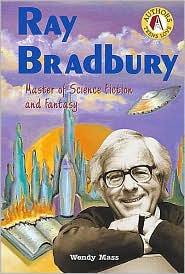 Ray Bradbury: Master of Science Fiction and Fantasy. Wendy Mass. 2004. Enslow Publishers. (Authors Teens Love Series). 104 pages.
Ray Bradbury: Master of Science Fiction and Fantasy. Wendy Mass. 2004. Enslow Publishers. (Authors Teens Love Series). 104 pages.
I enjoyed this short biography of Ray Bradbury. I found it rich in quotes--which is just what I was hoping for! I loved learning more about his life, his inspirations, his journey as a writer. Readers learn about his childhood, what inspired him to become a writer. Readers learn about his experiences writing short stories and the publishing process. Several of his books are highlighted--examined critically--his content, his style, etc. These include, of course, Fahrenheit 451 and The Martian Chronicles. Though Dandelion Wine, Something Wicked This Way Comes, and The Illustrated Man, also are mentioned to some extent. This biography follows Ray Bradbury's career through the decades. I found it informative and interesting.
Here is one of my favorite quotes--this is Ray Bradbury on writing:
People think you can plot a novel, but you can't. You have to let people live. If they lead big lives, you've got a novel. If they lead small ones, you've got a short story. (56)
Ray Bradbury on 'predicting' the future:
I don't try to predict the future, I try to prevent it. (63)
And did you know about this?!
In 1967, Bradbury's publisher released an edition of the book aimed at high school readers. They edited out any references to drinking and other behaviors and words not considered appropriate. Thus, a book about censorship had been censored. Fortunately, the original, unaltered version was still being published. But then in 1973, only the revised version was available for publication. This went on for six years until Bradbury was alerted to it by some students. He was horrified and made sure that the text was immediately restored to the original. In total, the editors had made ninety-eight changes. (61)
I liked this one. It may be small--but I found it informative. It would be a good starting place for those curious about Ray Bradbury's career as an author.
© Becky Laney of
Becky's Book Reviews
 A Hat Full of Sky. Terry Pratchett. 2004. HarperCollins. 288 pages.
A Hat Full of Sky. Terry Pratchett. 2004. HarperCollins. 288 pages.
It came crackling over the hills, like an invisible fog. Movement without a body tired it, and it drifted very slowly. It wasn't thinking now. It had been months since it had last thought, because the brain that was doing the thinking for it had died. They always died. So now it was naked again, and frightened.
I just LOVED The Wee Free Men. So I was very excited to read the second Tiffany Aching adventure in the series, A Hat Full of Sky. While I still loved Tiffany, still loved Rob Anybody, it didn't wow me as much as the first.
In A Hat Full of Sky, Tiffany leaves home to train to be a witch. She'll be living with Miss Level--a witch with two bodies--and "studying" under her. Which means she'll be serving not only Miss Level but the community as well. Miss Level is a kind, compassionate person who is always thinking of others. She'll meet hags--of all ages and persuasions--like Annagramma, Petulia, Mistress Earwig, Mistress Weatherwax, etc. Not every 'hag' she meets agree on magic, on what witchcraft is.
During her time away, Tiffany faces a new danger. A danger that Rob Anybody and the other Nac Mac Feegles will try to alert her of...before it's too late.
I still enjoyed this one. I still enjoyed the writing--the humor. Still liked the adventure of it. But not quite as much as the first.
© Becky Laney of Becky's Book Reviews

By: Becky,
on 9/10/2010
Blog:
Young Readers
(
Login to Add to MyJacketFlap)
JacketFlap tags:
poetry,
humor,
children's music,
songs,
Candlewick,
2004,
2010,
1961,
review copy,
Add a tag
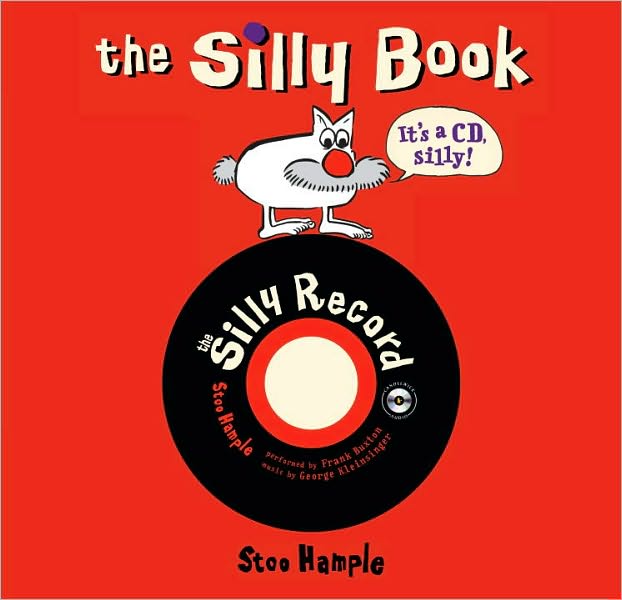
The Silly Book with CD. Stoo Hample. 2010/2004/1961. Candlewick Press. 32 pages.
Candlewick Press has reprinted Stoo Hample's The Silly Book; it was originally published along with the Silly Record (LP) in 1961. This latest edition--there was another reprint in 2004--includes the CD containing twenty-three minutes of silly songs and poems. How silly is silly? Very! It's silly nonsense through and through.
I had to listen to the CD a few times before I started to enjoy it. But. Once I gave it some of my time and attention, I must admit that *some* of the silliness worked for me. (Not that I'd want to listen to it continuously for weeks or anything.)
Here's one of my favorites:
Silly Recipe
Cook three pieces of
spaghetti in a pan of
water for two years.
Add one teaspoonful
of chocolate syrup
and mix well.
Spread on bread
and freeze.
Feed to teddy bear.
I also enjoyed "Silly Backwards Talk" and "Silly Story."
© Becky Laney of
Young Readers
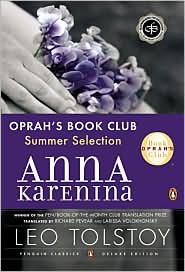
Anna Karenina. Leo Tolstoy. Translated by Richard Pevear and Larissa Volokhonsky. 2004, this translation. Penguin. 864 pages.
All happy families are alike; each unhappy family is unhappy in its own way.
Anna Karenina--big surprise--focuses on several families that are unhappy. These unhappy families are loosely connected with one another--some by marriage, some by friendship. The novel opens with Stepan Oblonsky and his wife, Dolly. Their marriage is in trouble--big trouble. But Stepan's sister, Anna, is coming to visit. She's not happily married either. (But her unhappy marriage is mostly stable. Therefore she is able to "model" how to be a wife.) He is hoping that Anna can talk some sense into Dolly. (She does.) During Anna's visit, she meets Kitty, Dolly's sister, and Alexei Vronsky, Kitty's suitor. Soon after, Vronsky drops Kitty. (Kitty who?!?!) He only has eyes for Anna Karenina. He follows her to Petersburg to pursue her. Kitty, of course, is heartbroken. She's lost Vronsky, someone she never really had in the true sense of the word, and Levin, Stepan's friend, who proposed to Kitty just days before Vronsky showed his true colors. It doesn't take long for these assorted characters to go their separate ways. The novel then takes turn visiting all these characters--all the while introducing new ones.
Anna Karenina is a novel of contrasts.
We've got the breakdown of a marriage as Anna begins an adulterous affair with Vronsky. An affair that destroys her husband and confuses her young son. Anna seeks her happiness in Vronsky, and she succeeds for a time. But it's happiness at a cost, with a sacrifice. She'll lose her son and her husband (not that she wanted him). She'll lose her social standing. She'll lose many of her friends and acquaintances. But she thinks it's worth it. For Vronsky, it's worth it. She loves him. This new relationship isn't perfect as we come to see. Readers will witness its destruction as well.
The relationship between Levin and Kitty, on the other hand, is slowly developed. This marriage, though not perfect, works. Both respect and love one another. Both value the other. The two communicate. They say what they mean, and mean what they say. This healthy relationship contrasts with the dysfunctional relationships of Anna.
To some extent, readers also follow the relationship of Dolly and Stepan. This is an unhappy marriage that--for better or worse--keeps working despite the disappointments and frustrations.
But Anna Karenina isn't just a novel about love, hate, jealousy, marriage, and adultery. It isn't just about dysfunctional families. Just about every subject is covered at one time or another. These characters like to talk. They like to hear themselves talk. They like to argue. They like to debate. (They don't always like to listen to others that well.) They like to talk politics and government. They like to talk religion. They like to talk about social class, gender, and race. They like to talk about education. (Who needs it, who doesn't.) They like to talk about the land too. Almost more than they like to find answers, they like to ask questions. Is it better to be rich or poor? married or single? happy or sad? dead or alive? Is it better to live in the country or in the city? How much should money matter? What society should you keep? When is it acceptable to get divorced? How big a role (or how small a role) should a mother have in the lives of her children? How many
View Next 3 Posts



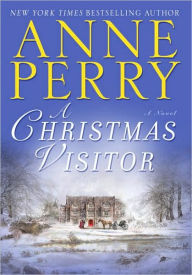

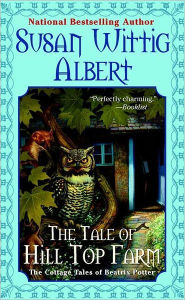

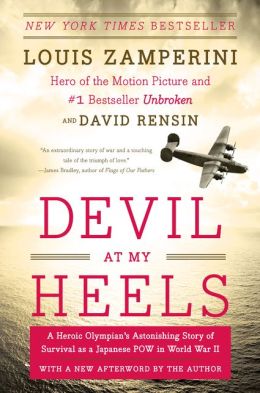
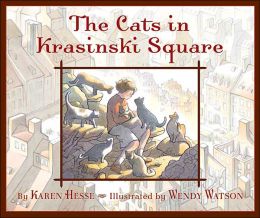



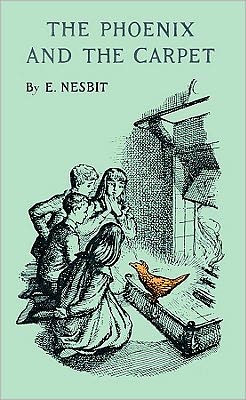


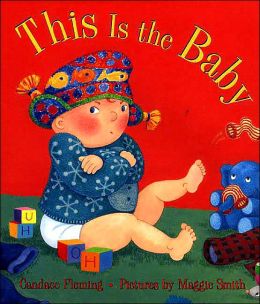


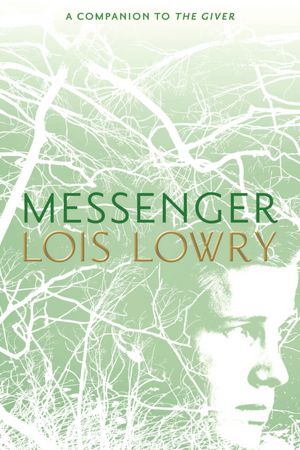

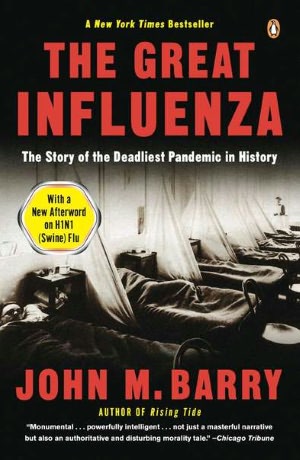

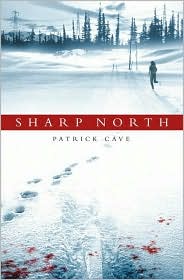



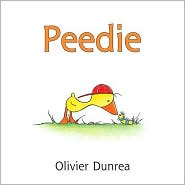
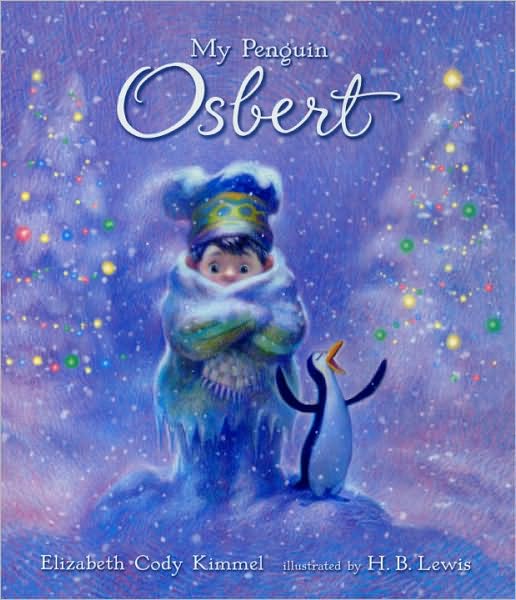




I read this book a while ago and I too thought it was a huge disappointment! Although I did enjoy it :).
New blog -
http://a-mix-of-everything-everywhere.blogspot.co.uk/
Follow back please :)